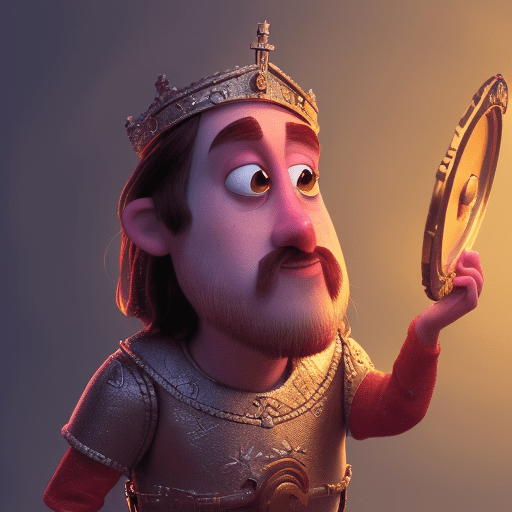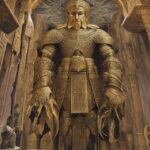“The Emperor’s New Clothes” is a classic bedtime fairy tale that has been enjoyed by generations of children and adults alike. It tells the story of a vain emperor who gets exposed before his subjects.
In this article, we will provide a detailed summary of the story, along with analysis, characters, moral lesson, themes, symbolism, culture impact, and FAQs.
Emperor New Clothes Short Story
Once upon a time, in a faraway kingdom, there lived an Emperor who loved nothing more than his clothes. He would spend hours each day admiring his vast collection of robes, capes, and tunics. The Emperor was known for his extravagant taste and his desire to always be the best-dressed ruler in the land.
One day, two cunning weavers arrived in the kingdom. They claimed to be able to weave the most exquisite fabric in the world, a fabric that was so special, only the wisest and most intelligent people could see it. The Emperor, intrigued by this idea, summoned the weavers to his palace.
The weavers, who were actually swindlers, presented themselves before the Emperor. They promised to create a magnificent suit of clothes for him, made from this extraordinary fabric. The Emperor, eager to possess such a unique garment, agreed to their proposal.
The weavers set up their looms in a grand room of the palace and pretended to work tirelessly day and night. They would often exclaim how beautiful the fabric was, describing its vibrant colors and intricate patterns. The Emperor, however, could not see anything on the looms. But he didn’t want to admit it, fearing that he would be considered foolish or unworthy of his position.
Curiosity got the better of the Emperor, and he decided to send his most trusted advisor to inspect the progress of the weavers. The advisor, too, was unable to see any fabric on the looms but, like the Emperor, didn’t want to appear foolish. He praised the weavers’ work and reported back to the Emperor, describing the incredible fabric in great detail.
Word spread throughout the kingdom about the extraordinary fabric, and everyone eagerly awaited the Emperor’s grand procession, where he would showcase his new clothes. On the day of the procession, the weavers presented the Emperor with his “invisible” suit. They helped him dress in the nonexistent fabric, pretending to adjust the non-existent buttons and collar.
The Emperor, feeling rather exposed but not wanting to admit it, paraded through the streets. The people, who had heard about the magical fabric, were in awe of the Emperor’s new clothes. They marveled at the colors and patterns, even though they couldn’t see anything. They didn’t want to be seen as foolish or unworthy either.
Among the crowd, a young boy watched the Emperor pass by. He couldn’t understand why everyone was praising the Emperor’s clothes when he could clearly see that the Emperor was naked. The boy, with innocence and honesty, shouted, “The Emperor is not wearing any clothes!”
The crowd fell silent, and the truth slowly sank in. People began to whisper to each other, realizing that they had been fooled by the weavers’ trickery. The Emperor, embarrassed and humiliated, quickly retreated back to the palace.
From that day forward, the Emperor learned a valuable lesson about the importance of honesty and humility. He realized that true worth does not lie in fancy clothes or outward appearances but in the goodness of one’s heart and actions.
And as for the weavers, they were never seen again in the kingdom. The people learned to be cautious and not be easily deceived by empty promises or illusions. And the young boy who had spoken the truth became a symbol of bravery and honesty, reminding everyone to always speak up, even if it means going against the crowd.
And so, the kingdom lived happily ever after, with a wise and humble Emperor who valued truth above all else.
The Emperor’s New Clothes Summary
The story begins with two con-men arriving at the capital city of an emperor who spends lavishly on clothing at the expense of state matters. Posing as weavers, they offer to supply him with magnificent clothes that are invisible to those who are stupid or incompetent. The emperor hires them, and they set up looms and go to work. A succession of officials, and then the emperor himself, visit them to check their progress. Each sees that the looms are empty but pretends otherwise to avoid being thought a fool.
Finally, the weavers report that the emperor’s suit is finished. They mime dressing him, and he sets off in a procession before the whole city. The townsfolk uncomfortably go along with the pretense, not wanting to appear inept or stupid, until a child blurts out that the emperor is wearing nothing at all. The people then realize that everyone has been fooled. Although startled, the emperor continues the procession, walking more proudly than ever.
Analysis
The story of “The Emperor’s New Clothes” is a timeless classic that has captured the imaginations of children and adults for generations. It is a story about the power of perception and the importance of honesty. The characters in the story are all unique and interesting, from the vain emperor to the clever con-men. The story is full of humor and satire, with a message that is still relevant today.
Characters
The characters in “The Emperor’s New Clothes” are all unique and interesting, from the vain emperor to the clever con-men. Other notable characters include the officials who visit the weavers to check their progress, and the townsfolk who uncomfortably go along with the pretense.
The Emperor’s New Clothes Moral Lesson
The moral lesson of “The Emperor’s New Clothes” is that it is important to be honest and to see things as they really are. The story encourages readers to question authority and to think for themselves, no matter how uncomfortable it may be.
Themes
The themes of “The Emperor’s New Clothes” include the power of perception, the importance of honesty, and the dangers of vanity. The story encourages readers to question authority and to think for themselves, no matter how uncomfortable it may be. It also emphasizes the importance of honesty and the value of seeing things as they really are.
The Emperor’s New Clothes Symbolism
The symbolism in “The Emperor’s New Clothes” is rich and complex, with many different interpretations possible. Some of the most notable symbols in the story include the emperor’s clothes, which represent the illusions that people create for themselves, and the child who blurts out the truth, which represents the power of honesty and the importance of speaking up.
Culture Impact
“The Emperor’s New Clothes” has had a significant impact on popular culture, with many adaptations and spin-offs created over the years. The story has been adapted into numerous films, television shows, and stage productions, and it has inspired countless other works of literature and art. The phrase “the emperor has no clothes” has become an idiom used to describe situations in which people are afraid to speak the truth.
FAQs
Q: What is the story of “The Emperor’s New Clothes” about? A: The story of “The Emperor’s New Clothes” is about a vain emperor who gets exposed before his subjects.
Q: Who are the main characters in “The Emperor’s New Clothes”? A: The main characters in “The Emperor’s New Clothes” include the vain emperor, the clever con-men, the officials who visit the weavers to check their progress, and the townsfolk who uncomfortably go along with the pretense.
Q: What is the moral lesson of “The Emperor’s New Clothes”? A: The moral lesson of “The Emperor’s New Clothes” is that it is important to be honest and to see things as they really are.
Q: What are the themes of “The Emperor’s New Clothes”? A: The themes of “The Emperor’s New Clothes” include the power of perception, the importance of honesty, and the dangers of vanity.










